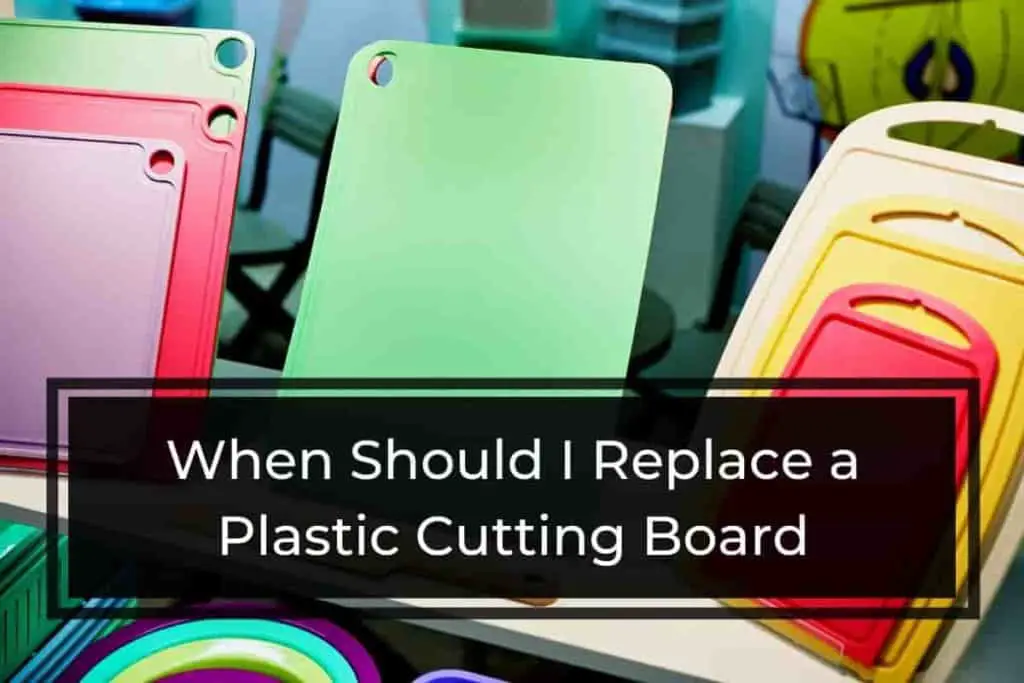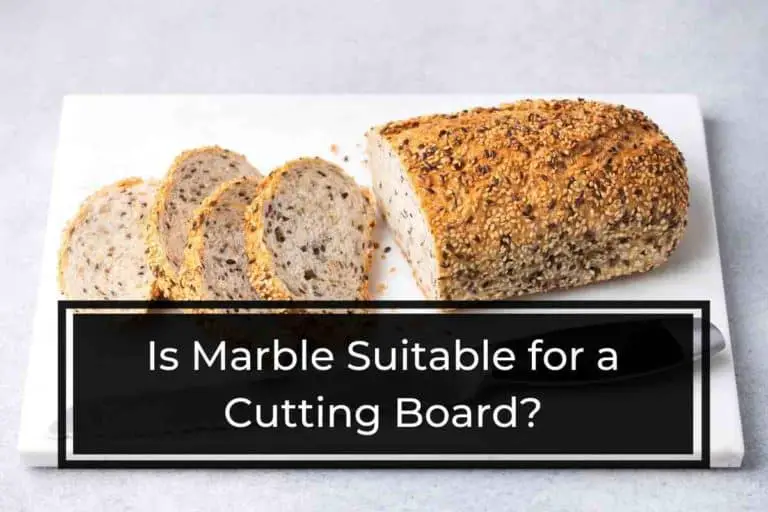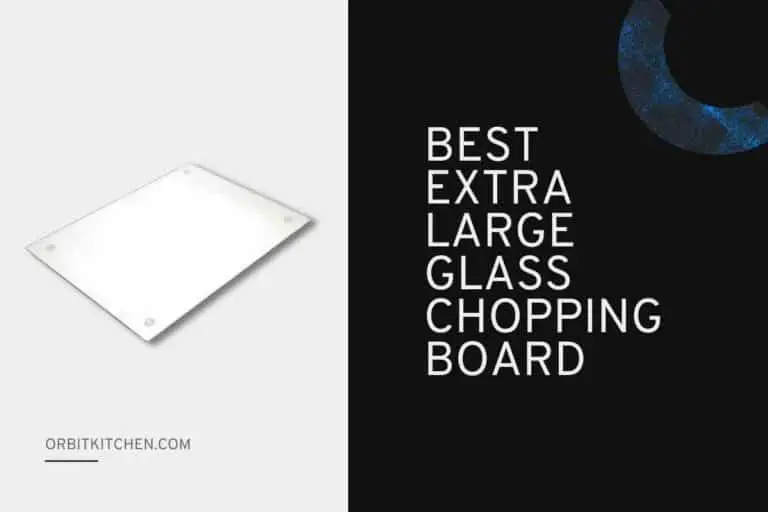When Should I Replace a Plastic Cutting Board?
The plastic cutting boards are one of the essential accessories in our kitchen. These boards are less expensive and widely used than wood cutting boards. The daily use of these boards for chopping vegetables, fruit, and meat and the use of sharp knives could shorten their lifespan.
When Should I Replace a Plastic Cutting Board?
You should replace the plastic cutting board if you are not sure it is properly cleaned. Plastic cutting boards do not have self-healing properties, making them easily scarred with sharp knives. The plastic boards that have been scarred are challenging to clean, and bacteria can survive even after washing.
When you do not wash it regularly, the bacteria keep growing there. So it would be best if you replace your plastic cutting board when you feel that the scratches and grooves are contaminating your food. Your cutting board has the most direct contact with your food, so it must be clean or replaced when needed.
In this comprehensive guide, we’ll explain when should you replace a plastic cutting board and how to repair these plastic boards. Plus some care tips to extend the life of your board, continue reading!

If you want to see the latest kitchen knives and cutlery that are popular right now, be sure to visit my Recommended Products Page (click to see my page) Which includes all of my top picks by category.
When Should You Replace Your Plastic Cutting Board?
It would be best if you replace your plastic cutting board every year. The replacement also depends on how often you use these cutting boards and care for them. In general, if you take proper care of plastic cutting boards and only use them occasionally, you can replace them every one to five years.
If you primarily prepare meat on your cutting boards, they’ll need to be replaced more frequently than wooden boards. Whenever you notice debris or dirt inside the board’s cuts and the color of the board has changed, it’s time to replace your plastic cutting board.
Whenever you feel your cutting board’s condition has deteriorated to the point that you can no longer use it, replace it immediately without any second thought. So, you should keep the maintenance of the plastic cutting board in view if you want to make it last longer.
But I would suggest you observe your cutting board by yourself and whenever you feel that the grooves are getting deeper and cleaning won’t help it, then replace it then and there.
Is It Safe to Use Old Plastic Cutting Boards?
It is not safe to use an old plastic cutting board until you have correctly and thoroughly cleaned or resurfaced it, as there would be a high risk of foodborne illness. Your old cutting board might have deep grooves with bacteria and other pathogens that you could transfer to your food leading to many health-related issues.
It is unhygienic to use an old cutting board without sanitizing it or cleaning it. A dirty cutting board is as dangerous as eating a portion of expired food since both results in foodborne diseases and other stomach-related illnesses.
In contrast, if you want to use an old cutting board, it is mandatory to clean it to avoid grooves and bacteria properly. If you successfully clean and sanitize your old plastic cutting board, it will be safe to use it.
Make sure to check our guide about are plastic cutting boards bad for knives.
What to Look at When Replacing?
If a plastic board becomes a place where bacteria hide due to deep cracks, you should immediately replace it. It’s best not to use a cutting board that you can’t correctly sanitize since food contamination could result.
Wear and Tear
Sharp knives are the big enemy of plastic cutting boards; when they have deep cuts and crack, they will trap the bacteria. So, instead of washing it or sanitizing it, you should throw this board and buy a new one.
Since plastic cutting boards are affordable, they will not strain your wallet when they need to be replaced. Instead of putting your health at risk, you should change your plastic board when it gets cut and cracks.
Cross Contamination
Despite being less porous than wood, plastic cutting boards can still harbor bacteria and cause contamination. However, these boards are unsuitable for scratches and can easily scar the knives.
When the plastic cutting board has deep cuts and cracks, it will trap the bacteria. After some time, these boards will begin to accumulate cuts and scrapes, resulting in bacterial growth. There is a risk of food contamination because you can’t thoroughly clean the board due to the cracks and deep cuts.
Difficulty in Cleaning
When you frequently use the plastic cutting board, the knife can damage it quickly and cause deep cuts. The cracks and deep scratches will not allow you to clean the board entirely, so you do not take the risk of food contamination. Instead of washing it or sanitizing it, you should throw this board and buy a new one.

If you like this Gorilla Grip Plastic Cutting Board, you could buy it on Amazon here.
How Long Do Plastic Chopping Boards Last?
The plastic chopping boards can last up to one year. It also depends on how frequently you use these plastic boards. If you choose a quality plastic cutting board and a durable brand, it can withstand heat and water well. The nonporous properties of plastic make these boards popular cutting boards for many cooks and widely used in home kitchens.
If you use the board only once a week or twice a week, the board can last for five years. Also, if used, cleaned, and cared for properly and regularly, a cutting board will last more than five years. It may vary for different brands as the quality of the material dramatically influences this period.
The durability of the cutting board depends on its usage. If used in a restaurant, its usage will be higher than that of a household cutting board, so grooves will be more likely to appear on such a cutting board, and you will wear it earlier than a household cutting board.
However, if you do not take care of your plastic cutting board and do not clean and sanitize it properly, you might not even get a year out of it. No matter how long it is supposed to last, discard it immediately if you feel that your cutting board can’t survive that long.
Do Plastic Cutting Boards Expire?
You can consider your plastic cutting board to expire when the grooves seem more profound, and there are scratches and discoloration on the board. When these signs start appearing, it’s time to replace your cutting board, or you might enter bacteria in your body and get ill.
Also, many companies give a deadline for each cutting board, which may be accurate; however, the amount of usage will impact this period.
However, there is no specific period that tells you that your plastic cutting board is expired; the cutting board’s condition clearly illustrates that it’s time to discard it. In my opinion, your cutting board does not get expired; instead, it becomes gross and dirty, which is an identification that it is no longer safe to use and would not function properly.
How to Extend the Life of Plastic Cutting Boards?
You can extend the life of a plastic cutting board by maintaining it regularly. The best way to preserve these cutting boards is to sanitize them after every use. You can wash the plastic boards by hand using bleach or vinegar, or you can put them in the dishwasher after every use.
Plastic Quality
The quality of the plastic board also plays a role in the longevity of the cutting board. In contrast to a high-quality plastic board, a cheap or low-quality board can quickly get scratches and cuts. Top plastic board manufacturers ensure the safety and quality of their products. Choosing a high-quality or branded plastic chopping board is essential if you want to extend its life.
Color-Coded Plastic Cutting Boards
You can purchase a set of boards in different colors and use each one separately because they all come in a wide range of colors. It would make sense to use one board only for raw meat and another for vegetables and fruits. As a result, these boards will be less likely to get damaged, and you will be able to use them for an extended period without having to replace them.

Use of Knives
Sharp knives are prone to scarring and deep cuts when used for all tasks, but they can also dull the knife blades. It is common to use plastic cutting boards when chopping meat and vegetables in the kitchen, and this would cause damage to them because knives are not used at the same angle.
Is It Possible to Repair a Plastic Cutting Board?
The best way to repair plastic cutting boards is to sand them with sandpaper. However, scratches and deep cuts are not repairable with this method. By using sandpaper, you can make the plastic board surface smoother.
You can use medium-grade sandpaper to do this restoring process. Your plastic board will look brand new after sanding it. However, If the old plastic cutting boards still smell bad after repairing them and even after washing them properly, then replace them.

You can check out the current prices on Amazon here.
Can You Resurface a Plastic Cutting Board?
You can easily resurface your plastic chopping board. Many methods can completely resurface the plastic cutting boards, but sanding is the most common one.
You can do this process at your home, but there are some safety guidelines to understand before starting it. You can check the complete guide to resurface a plastic cutting board at your home conveniently.
Care Tips for Using Plastic Cutting Boards
The cutting board is an essential part of the kitchen as it comes into contact with your food almost every day, so you must maintain it carefully to prevent food contamination.
If your cutting board is gross, it would contaminate your food and cause foodborne or other diseases. So if you are worried about how you would maintain or clean your plastic cutting board, follow these guidelines.
- Never use the same cutting board for meat and veggies. If you cut vegetables on a meat cutting board, there is a high risk of bacterial contamination, and if you cut meat on a veggie cutting board, it would transfer pathogens leading to foodborne illness.
- Use separate cutting boards in different colors (to differentiate) for raw and cooked food and other food categories.
- Always clean your cutting board thoroughly after every use, and dry completely before storing because moisture encourages bacterial growth.
- Apart from regular cleaning, it is essential to properly sanitize the cutting board to avoid cross-contamination or bacterial growth.
- It is essential to replace your cutting board at some point where cleaning and sanitizing won’t be effective. When there are a lot of deep grooves on your cutting board, replace them then and there.
Final Thoughts
You can use different colored plastic cutting boards to prevent cross-contamination, and they are less expensive than wood cutting boards. They can dull knives faster than wood boards, but they are better than glass cutting boards.
If sharp knives are used on plastic boards, they are likely to scar and be challenging to clean. It would be best to change your plastic cutting board when you are not satisfied that it is properly cleaned.
When there are a lot of scratches, and the grooves become more profound, it’s time to replace your plastic cutting board with a new one. The grooves are where bacteria hide on a cutting board and cause foodborne diseases.
If you want to see the latest kitchen knives and cutlery that are popular right now, be sure to visit my Recommended Products Page (click to see my page) Which includes all of my top picks by category.






